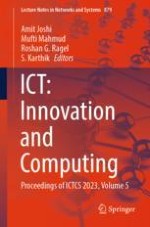2024 | OriginalPaper | Buchkapitel
Microarray Data Classification and Gene Selection Using Convolutional Neural Network
verfasst von : M. Jansi Rani, M. Karuppasamy, K. Poorani
Erschienen in: ICT: Innovation and Computing
Verlag: Springer Nature Singapore
Aktivieren Sie unsere intelligente Suche, um passende Fachinhalte oder Patente zu finden.
Wählen Sie Textabschnitte aus um mit Künstlicher Intelligenz passenden Patente zu finden. powered by
Markieren Sie Textabschnitte, um KI-gestützt weitere passende Inhalte zu finden. powered by
